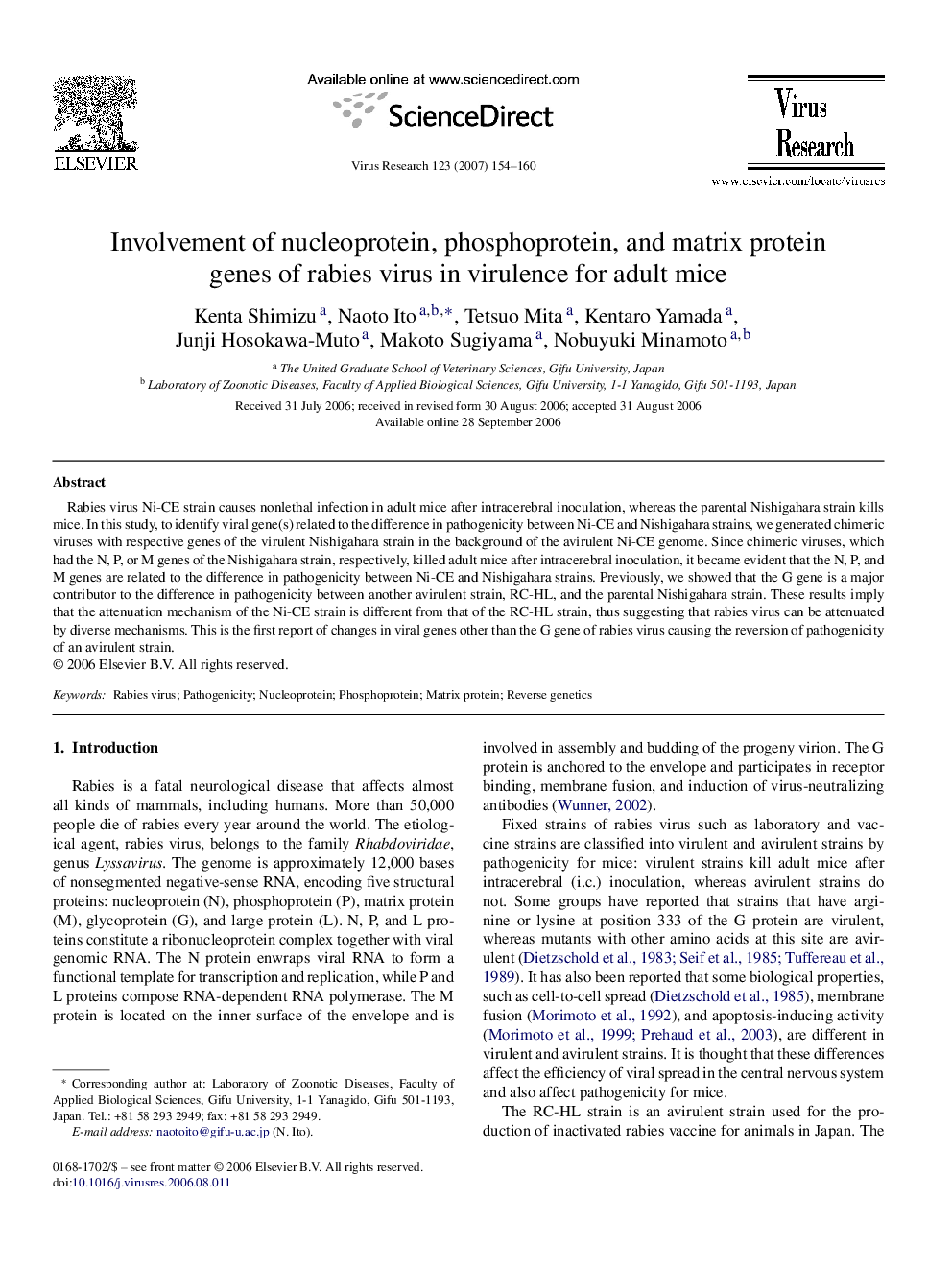| Article ID | Journal | Published Year | Pages | File Type |
|---|---|---|---|---|
| 3430863 | Virus Research | 2007 | 7 Pages |
Rabies virus Ni-CE strain causes nonlethal infection in adult mice after intracerebral inoculation, whereas the parental Nishigahara strain kills mice. In this study, to identify viral gene(s) related to the difference in pathogenicity between Ni-CE and Nishigahara strains, we generated chimeric viruses with respective genes of the virulent Nishigahara strain in the background of the avirulent Ni-CE genome. Since chimeric viruses, which had the N, P, or M genes of the Nishigahara strain, respectively, killed adult mice after intracerebral inoculation, it became evident that the N, P, and M genes are related to the difference in pathogenicity between Ni-CE and Nishigahara strains. Previously, we showed that the G gene is a major contributor to the difference in pathogenicity between another avirulent strain, RC-HL, and the parental Nishigahara strain. These results imply that the attenuation mechanism of the Ni-CE strain is different from that of the RC-HL strain, thus suggesting that rabies virus can be attenuated by diverse mechanisms. This is the first report of changes in viral genes other than the G gene of rabies virus causing the reversion of pathogenicity of an avirulent strain.
